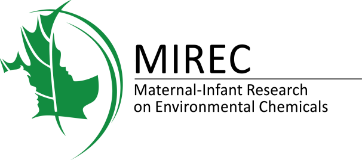
Applicability of a high-throughput shotgun plasma protein screening approach in understanding maternal biological pathways relevant to infant birth weight outcome.
Kumarathasan P, Vincent R, Das D, Mohottalage S, Blais E, Blank K, Karthikeyan S, Vuong NQ, Arbuckle TE, Fraser WD. Journal of Proteomics. 2014 Apr 4;100:136-46. doi: 10.1016/j.jprot.2013.12.003
Previous research has shown that factors such as maternal nutritional status, smoking, and exposure to certain environmental chemicals during pregnancy can adversely affect pregnancy outcomes. However, very little is known about the biological basis for the link between some of these factors and birth outcomes.
In this exploratory study, researchers tested the ability of a new laboratory technique to screen blood plasma for changes in specific proteins (“proteomic” changes), including biological changes at the molecular level. This new “high-throughput (or high-volume) shotgun plasma proteomic screening” technique, a mass spectrometry method, can be used to identify changes in maternal blood plasma proteins that are relevant to pregnancy outcomes such as low birthweight, for example.
The researchers used this new mass spectrometry screening technique to analyze a small subset of third-trimester maternal blood plasma samples from the MIREC Study for changes in the mothers’ blood proteins. Twelve samples from each of two groups of mothers were analyzed: those who had babies of normal birth weight, and those who had babies of low birth weight (defined as less than 2,700 grams).
These same maternal blood plasma samples were also analyzed for known target proteins – for example, specific cytokines (small proteins that are important in cell signalling) and cardiovascular-related proteins – using an alternate laboratory method involving antibody-binding assays, whereby specific “flagged” antibodies are used to bind to plasma proteins.
The study results showed that this high-throughput proteomic screening technique can be used to identify protein changes and interactions in pregnant women that can contribute to adverse pregnancy outcomes such as low infant birth weight. This screening approach can help to improve our understanding of the effects of maternal exposure to environmental chemicals, and in the early detection of mothers at risk for low infant birth weight, thereby allowing earlier diagnosis, treatment and prevention of adverse birth outcomes.
MIREC Année all rights reserved - Privacy policy
Website by Riposte


